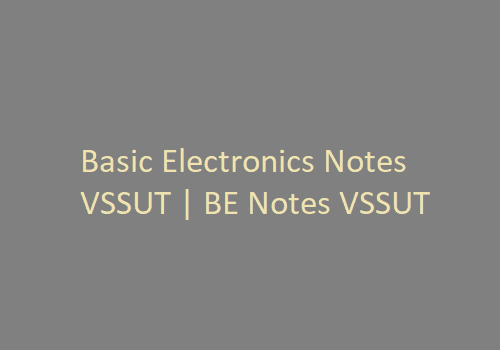DAA Notes Pdf – Design and Analysis of Algorithms JNTU notes free download
Here you can download the Free lecture Notes of Design and Analysis of Algorithms Notes pdf – DAA notes Pdf materials with multiple file links to download. The Design and Analysis of Algorithms pdf notes – DAA pdf notes book starts with the topics covering Algorithm, Psuedo code for expressing algorithms, Disjoint Sets- disjoint set operations, applications-Binary search, applications-Job sequencing with dead lines, applications-Matrix chain multiplication, applications-n-queen problem, applications – Travelling salesperson problem, non-deterministic algorithms, Etc.

About Design and Analysis of Algorithms Notes Pdf
Welcome to the ultimate guide for Design and Analysis of Algorithms (DAA) Notes! Whether you are a B Tech student or a professional looking to enhance your knowledge, these notes will provide a comprehensive understanding of algorithm design and analysis. Let’s dive into this crucial area of computer science that forms the foundation of efficient problem-solving and computational thinking.
At JNTU, the DAA curriculum is meticulously structured to provide students with both theoretical knowledge and practical skills. The lecture notes cover a wide range of topics from basic algorithm concepts to advanced techniques like dynamic programming and NP-completeness, ensuring a holistic learning experience.
Design and Analysis of Algorithms Notes, PDF | DAA B Tech (2024)
For B Tech students, particularly those enrolled in the 2024 curriculum, these notes are tailored to meet your academic requirements. The notes are up-to-date with the latest advancements in algorithm design and analysis, making them an invaluable resource for your studies.
These notes are not just a collection of information but a well-organized guide that covers all essential aspects of algorithm design and analysis. Starting from the basics of algorithms to more complex problems like the traveling salesperson problem and NP-hard problems, the notes provide detailed explanations of each topic.

Design and Analysis of Algorithms | PDF, Syllabus, Books | B Tech (2025)
The DAA syllabus for B Tech 2024 includes a variety of topics such as divide and conquer, greedy methods, dynamic programming, and backtracking. Alongside the syllabus, recommended books by industry experts are also provided to enhance your learning experience.
Overview of DAA Notes Pdf
The DAA Notes Pdf starts with an introduction to algorithm analysis, including space and time complexity. It then progresses to more advanced topics like dynamic programming and NP-completeness. This structured approach ensures a deep and thorough understanding of each concept.
Topics Covered in Design and Analysis of Algorithms Handwritten Notes
The handwritten notes cover a broad spectrum of topics, meticulously broken down unit by unit:
- Unit I: Introduction to Algorithms, including pseudo-code, performance analysis, and asymptotic notation.
- Unit II: Disjoint Sets, spanning trees, and connected components.
- Unit III: Divide and Conquer, covering binary search, quicksort, and merge sort.
- Unit IV: Greedy Method, including job sequencing and the 0/1 knapsack problem.
- Unit V: Dynamic Programming, covering matrix chain multiplication and the traveling salesperson problem.
- Unit VI: Backtracking, including the n-queen problem and graph coloring.
- Unit VII: Branch and Bound, focusing on the traveling salesperson problem and knapsack problems.
- Unit VIII: NP-Hard and NP-Complete Problems, including non-deterministic algorithms and Cook’s theorem.
Links to Download Design and Analysis of Algorithms Notes Pdf
To make your study process easier, here are the direct download links for each unit:
Latest Material Links
Complete Notes
Link – Complete Notes
Unit 1
Link – Unit 1 Notes
Unit 2
Link – Unit 2 Notes
Unit 3
Link – Unit 3 Notes
Unit 4
Link – Unit 4 Notes
Unit 5
Link – Unit 5 Notes
Unit 6
Link – Unit 6 Notes
Unit 7
Link – Unit 7 Notes
Unit 8
Link – Unit 8 Notes
Old Material Links
Complete Notes
Link:Complete Notes
Unit 1
Link : Chapter 1 Notes
Unit 2
Link : Chapter 2 Notes
Unit 3
Link : Chapter 3 Notes
Unit 4
Link : Chapter 4 Notes
Unit 5
Link : Chapter 5 Notes
Unit 6
Link:Chapter 6 Notes
Unit 7
Link:Chapter 7 Notes
Unit 8
Link:Chapter 8 Notes
Unit 9
Link:Chapter 9 Notes
Unit 10
Link:Chapter 10 Notes
Note :- These notes are according to the R09 Syllabus book of JNTU. In R13 and R15, 8-units of R09 syllabus are combined into 5-units in R13 and R15 syllabus. If you have any doubts please refer to the JNTU Syllabus Book.

DAA Notes and Study Material PDF Free Download
Downloading these notes is simple and free. The PDF format ensures that you can access the notes on any device, making it convenient to study anytime, anywhere. The study material is curated to help you grasp the complex concepts of algorithm design and analysis with ease.
DOWNLOAD NOW
DAA Notes Pdf from JNTU
These notes are specifically tailored to the JNTU syllabus, ensuring that you cover all the necessary topics required for your course. The alignment with the university curriculum guarantees that you are well-prepared for your exams.
Always Choose Smartzworld to Download DAA Notes PDF
Smartzworld is a trusted source for downloading high-quality educational materials. By choosing Smartzworld, you ensure that you are getting accurate, up-to-date, and comprehensive notes that will aid in your academic success.
Benefits of FREE Design and Analysis of Algorithms Handwritten Notes PDF
Handwritten notes have a unique advantage as they often simplify complex topics, making them easier to understand. These notes are carefully crafted to provide clarity and insight into each subject matter, enhancing your learning experience.
FAQs about Design and Analysis of Algorithms Notes Pdf
Q1. Where can I download the Design and Analysis of Algorithms Notes Pdf? You can download the notes from the provided links for each unit or the complete set from Smartzworld.
Q2. How to download the DAA Notes Pdf? Simply click on the download links provided for each unit or the complete set.
Q3. How many modules are covered in DAA Notes Pdf? The notes cover eight modules, each focusing on different aspects of algorithm design and analysis.
Q4. Topics Covered in DAA Notes Pdf? The notes cover topics such as divide and conquer, greedy methods, dynamic programming, backtracking, and NP-hard problems.
Q5. Where can I get the complete DAA Handwritten Notes pdf FREE Download? You can download the complete handwritten notes for free from the provided link.
Q6. How to download DAA Handwritten Notes pdf? Click on the provided link to download the handwritten notes in PDF format.
Q7. How to Download FREE DAA Notes PDF? You can download the free DAA notes PDF by clicking on the download links for each unit or the complete set provided above.
Conclusion
In conclusion, these Design and Analysis of Algorithms Notes Pdf are an invaluable resource for anyone looking to master the subject. With detailed explanations, comprehensive coverage of topics, and easy access to downloadable content, these notes are designed to support your learning journey. Whether you are preparing for exams or just looking to expand your knowledge, these notes have got you covered. Happy studying!
Reference
1. Introduction to Algorithms, secondedition,T.H.Cormen,C.E.Leiserson, R.L.Rivest,and C.Stein,PHI Pvt. Ltd./ Pearson Education
2. Introduction to Design and Analysis of Algorithms A strategic approach, R.C.T.Lee, S.S.Tseng, R.C.Chang and T.Tsai, Mc Graw Hill.
3. Data structures and Algorithm Analysis in C++, Allen Weiss, Second edition, Pearson education.
4. Design and Analysis of algorithms, Aho, Ullman and Hopcroft,Pearson education.
5. Algorithms – Richard Johnson baugh and Marcus Schaefer, Pearson Education
Text books
1. Fundamentals of Computer Algorithms, Ellis Horowitz,Satraj Sahni and Rajasekharam,Galgotia publications pvt. Ltd.
2. Algorithm Design: Foundations, Analysis and Internet examples, M.T.Goodrich and R.Tomassia,John wiley and sons.
Follow us on Facebook and Support us with your Like


